One of the most common questions we get through our email helpdesk is “Can I get an FFL for personal use?” Well, as a firearms attorney with years of experience working with the ATF, representing hundreds of FFLs across the country, and helping many thousands of people get their Federal Firearms License, I can give […]
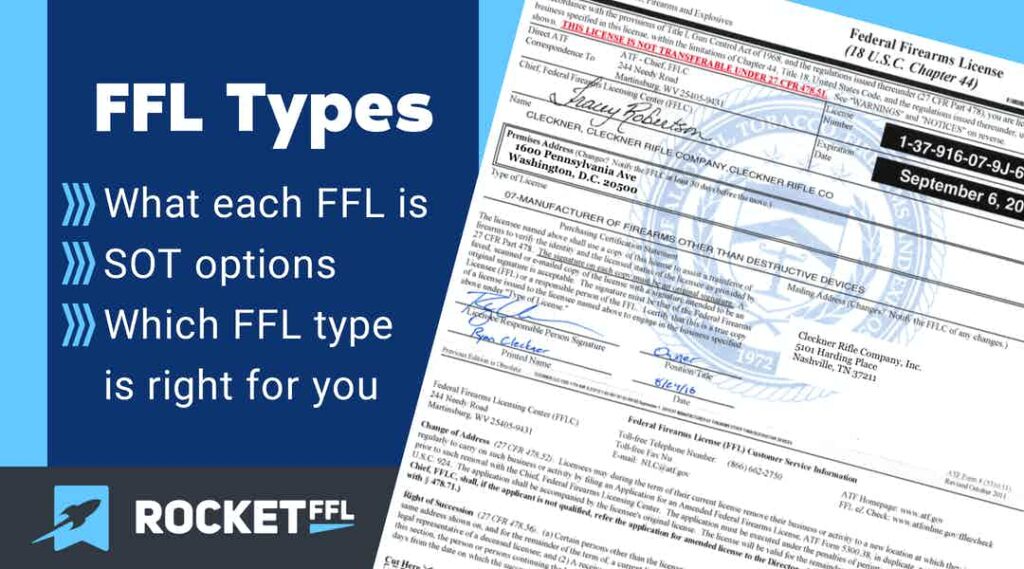
FFL License Types – Which FFL Should You Get? [2025]
An FFL, or Federal Firearms License, is a license that allows a person or business to “engage in the business of firearms.” In other words, having an FFL allows you to import, make, or sell firearms as a business.
However, there are different types of FFLs and each different license type allows different firearm activities – so you need to pick the right one.
I am a firearms attorney that has helped thousands of people get their FFL and I’ve represented and helped hundreds of FFLs Atay out of trouble with the ATF. In this article I’m going to use that experience to explain the differences between each type of FFL and hopefully help you decide on the right type of FFL for you.
Federal Firearm Licenses, by themselves, allow dealing, manufacturing, or importing of GCA / Title I firearms only. These include standard rifles, shotguns, and handguns.
How Many FFL License Types Are There?
There are currently 9 different types of FFL licenses:
Depending on the type of firearm business activity you’d like to conduct, you’ll need a particular “type” of FFL license.
Types of FFL:
- Type 01 – Firearm Dealer/Gunsmith
- Type 02 – Pawnbroker
- Type 03 – Collector
- Type 06 – Manufacture of Ammunition
- Type 07 – Manufacturer of Firearms
- Type 08 – Importer of Firearms
- Type 09 – Dealer of “Destructive Devices”
- Type 10 – Manufacturer of “Destructive Devices”
- Type 11 – Importer of “Destructive Devices”
The three main categories of business activity allowed by FFLs are dealing (selling) guns, making (manufacturing) guns, and importing guns into the country.
- Dealers need FFL license types 01, 02, or 09
- Manufacturers need FFL license types 06, 07, or 10
- Importers need FFL license types 08 or 11
Here’s a table with a summary of each FFL License type, along with its purpose and what SOT class is required.
FFL License Types
| FFL License Type | FFL License Purpose | SOT Class |
|---|---|---|
| Type 01 FFL | Dealer/Gunsmith of Firearms | 3 |
| Type 02 FFL | Pawnbroker/Dealer of Firearms | 3 |
| Type 03 FFL | Collector of Firearms | n/a |
| Type 06 FFL | Manufacturer of Ammunition | n/a |
| Type 07 FFL | Manufacturer/Dealer of Firearms and Ammunition | 2 |
| Type 08 FFL | Importer/Dealer of Firearms | 1 |
| Type 09 FFL | Dealer of Destructive Devices | 3 |
| Type 10 FFL | Manufacturer/Dealer of Destructive Devices | 2 |
| Type 11 FFL | Importer/Dealer of Destructive Devices | 1 |
Categories of FFL License Types
Each FFL license type can be broken down into four basic categories:
- Collector FFL – This category can not “engage in the business of firearms.” As the name suggests, it is for collecting firearms only.
- Dealer FFL – These FFLs may purchase and sell guns as a business, and they may also operate as gunsmiths.
- Manufacturer FFL – There are two types of these FFLs: manufacturers of firearms and ammunition and manufacturers of ammunition only. Firearm and ammunition manufacturers may, of course, manufacture firearms and ammunition and also act a dealer. Ammunition manufacturers may only manufacture ammunition and may NOT act as a firearm manufacturer nor dealer.
- Importer FFL – These FFLs may import firearms and/or ammunition and also act as a dealer.
Here’s a break-down of the types of activities that can be conducted depending on the FFL license type.
Note that the Type 3 FFL and Type 6 FFL do not allow any business activity with firearms. This is because the Type 3 is for collecting only and the Type 6 is for manufacturing ammunition only.
Firearm Activity by FFL License Type
| FFL Type | Firearm Dealer | Firearm Manufacturer | Firearm Importer |
|---|---|---|---|
| Type 1 FFL | ✓ | X | X |
| Type 2 FFL | ✓ | X | X |
| Type 3 FFL | X | X | X |
| Type 6 FFL | X | X | X |
| Type 7 FFL | ✓ | ✓ | X |
| Type 8 FFL | ✓ | X | ✓ |
| Type 9 FFL | ✓ | X | X |
| Type 10 FFL | ✓ | ✓ | X |
| Type 11 FFL | ✓ | X | ✓ |
You can tell which type of FFL someone has once you know what each part of an FFL number means.
The FFL can either be in a person’s name as a sole proprietor or a company name as a firearms business. We break all of this down for you in our course. In either case, you will be considered the Responsible Person on the license.
The cost for each license varies from $30 up to $3,000, for the both the initial FFL application fee and the 3-year renewal fee. For a breakdown of these costs, see our article, How Much Does an FFL Cost?
FFL with SOT
An FFL holder must also become a Special Occupational Taxpayer (SOT) in order to deal, manufacture, or import NFA /Title II firearms. These firearms include specially regulated items like Silencers, Short Barreled Rifles (SBRs), and full-auto machine guns.
Different classes of SOTs may engage in different activities.
- Class 1 SOT – These SOTs may Import and deal NFA / Title II firearms
- Class 2 SOT – These SOTs may manufacture and deal NFA / Title II firearms
- Class 3 SOT – These SOTs may deal NFA / Title II firearms
The tax-rate for SOT registration varies, depending on how much you sold.
FFL Types, 9, 10, and 11 are the only FFLs that allow working with Armor Piercing Ammunition and Destructive Devices.
Which Type of FFL is Right For You?
So, which FFL License Types should you get? Chance are, you choice is between a Type 1 FFL for dealers or a Type 7 FFL for manufacturers.
These are the two most common types of FFLs. For example, see the graph of the distribution of FFLs in our country.
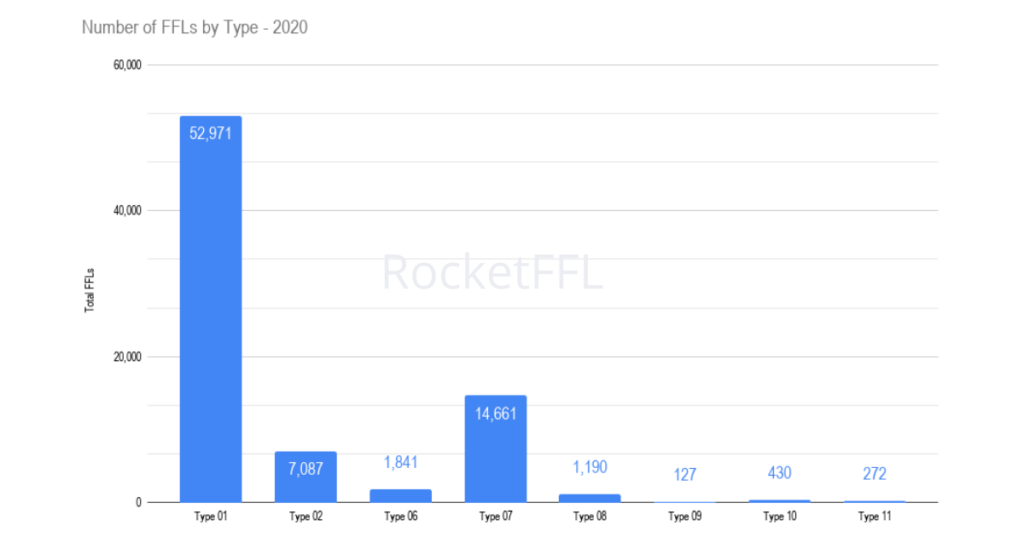
Learn more about how to get an FFL or, if you’re ready to get your own FFL, sign up for our Get Your FFL and Become an SOT courses.
FFL Type Details
Let’s breakdown each license type for FFLs to explore what the most common firearms licenses cover.
Type 1 FFL
As mentioned above, the Type 01 Dealer and Gunsmith FFL is the most common type of federal firearm license for business-use in the country.
The Type 1 dealer’s federal firearms license allows for the buying and selling of firearms as a business (being a gun dealer). This license type also allows for gunsmithing activities.
This is all you need if you want to work with Title I firearms (standard firearms). With this FFL you are considered a title I dealer. If you want to deal with an nfa weapon, then you’ll also need to become an SOT so that you don’t need a tax stamp for every nfa item. However, your customers will still need to purchase the NFA weapon on an ATF Form 4 and get their tax stamp.
If you don’t know where to start, and especially if you don’t have a desire to manufacture guns, this is likely the FFL type for you. If you’d like to learn more, check out our FFL Course.
This is a popular license for firearm enthusiasts that want to become gun dealers – even for a home-based FFL, online stores, at gun shows, or even for some side-money conducting transfers.
The ultimate guide to getting your Federal Firearms License
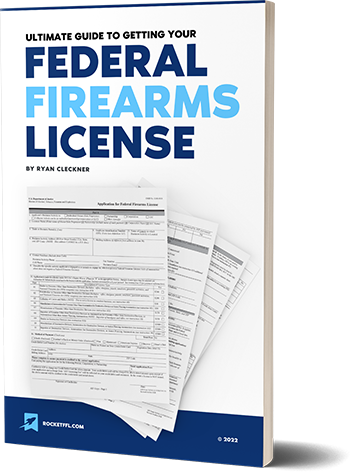
Type 2 FFL
The Type 02 firearms license is effectively the same as the Type 01 FFL, but it also allows pawnbroker activities.
Only get this type of license if you are specifically interested in pawning firearms.
Type 3 FFL
A type 03 ffl is for collectors of curio and relic firearms. It is NOT for engaging in business with firearms.
Type 03 FFL holders may not receive modern firearms. They can only receive a curio and relic firearm for their collection. Licensees of a Type 3 FFL are considered to be a licensed collector only and not licensed dealers or manufacturers.
If you’d like to learn more about a curio and relic (C&R) license, check out this article: How to get a C&R license
Type 6 FFL
Type 06 FFLs are for ammunition manufacturers.
This license type allows the making of ammunition with the intent to sell. It does not allow any business activity with firearms.
Type 7 FFL
The Type 7 FFL allows the making of firearms with the intent to sell. It also allows the holder to sell other firearms and manufacture ammunition (yes, really).
This is the second most common type of FFL because a Type 7 FFL allows a licensee to make guns as well as buy/sell firearms.
Many people are worried about getting a Type 7 FFL because they think that they have to register with ITAR and pay a big fee. The ITAR rules have changed, and this only applies to a licensed manufacturer who intends to make at least one NFA firearm. (note, if you want to make a destructive device or armor piercing ammunition, a Type 7 FFL won’t work for you).
Another nice benefit to a Type 7 FFL is that when you make an NFA firearm (like a silencer or suppressor, a machine gun, a short barreled rifle or SBR, etc.) you only need to submit an NFA form after you made the NFA item (no pre-approval or waiting period). Within 24 hours of making the NFA Firearm, a type 7 FFL simply submits an ATF form 2 (an NFA form) as a notice to the ATF. Of course, to Make NFA Firearms (also sometimes called Title II NFA firearms because the National Firearms Act is “title II” of our federal gun control laws), you would also need to become a special occupational taxpayer (SOT).
However, to make “standard” guns like a rifle, handgun (pistol or revolver), or shotgun, only the type 07 FFL is needed. These types of guns are sometimes called title I firearms because the Gun Control Act (GCA) is sometimes called Title I of our federal gun laws.
The Type 7 FFL also allows the manufacturing of ammunition.
NOTE: Antique firearms are not technically “firearms” under federal arms regulation. Therefore, a type 7 FFL is not required by the BATF to make an antique firearm.
Type 10 FFL
The Type 10 FFL is very similar to the Type 07 FFL in that it is a manufacturer’s license.
However, unlike the Type 7, the Type 10 FFL allows for the manufacturing of destructive devices and armor piercing ammunition. It is an FFL requirement to have an intent to make these two special classes of items.
Number of FFL Licenses by Type
| FFL Type | Quantity |
|---|---|
| Type 01 FFL | 52,971 |
| Type 02 FFL | 7,087 |
| Type 06 FFL | 1,841 |
| Type 07 FFL | 14,661 |
| Type 08 FFL | 1,190 |
| Type 09 FFL | 127 |
| Type 10 FFL | 430 |
| Type 11 FFL | 272 |
Number of FFL Licenses by State
To see how popular each firearm license type is in your state, we’ve broken down the the total number of Federal Firearm Licenses by state followed by the number of each FFL type per state:
Total of FFLs by State
| STATE | TOTAL FFLs |
|---|---|
| AK | 835 |
| AL | 2,130 |
| AR | 1,880 |
| AZ | 3,469 |
| CA | 8,589 |
| CO | 2,974 |
| CT | 1,765 |
| DE | 321 |
| FL | 7,103 |
| GA | 3,502 |
| HI | 225 |
| IA | 1,995 |
| ID | 1,520 |
| IL | 4,487 |
| IN | 2,753 |
| KS | 1,784 |
| KY | 2,219 |
| LA | 1,955 |
| MA | 3,952 |
| MD | 2,850 |
| ME | 886 |
| MI | 3,869 |
| MN | 2,429 |
| MO | 4,226 |
| MS | 1,454 |
| MT | 1,498 |
| NC | 4,500 |
| ND | 706 |
| NE | 1,102 |
| NH | 1,177 |
| NJ | 467 |
| NM | 1,032 |
| NV | 1,311 |
| NY | 3,815 |
| OH | 4,494 |
| OK | 2,207 |
| OR | 2,140 |
| PA | 6,155 |
| RI | 571 |
| SC | 2,125 |
| SD | 761 |
| TN | 3,119 |
| TX | 10,830 |
| UT | 1,520 |
| VA | 4,011 |
| VT | 550 |
| WA | 3,147 |
| WI | 2,849 |
| WV | 1,352 |
| WY | 883 |
| Total | 131,652 |
Number of FFL License Type by State
| STATE | TYPE 01 | TYPE 02 | TYPE 06 | TYPE 07 | TYPE 08 | TYPE 09 | TYPE 10 | TYPE 11 |
|---|---|---|---|---|---|---|---|---|
| AK | 507 | 25 | 19 | 100 | 6 | 2 | 1 | 1 |
| AL | 854 | 248 | 37 | 246 | 20 | 3 | 14 | 10 |
| AR | 847 | 330 | 42 | 269 | 12 | 4 | 12 | 2 |
| AZ | 1,248 | 167 | 68 | 865 | 55 | 5 | 32 | 21 |
| CA | 1,825 | 91 | 66 | 523 | 73 | 8 | 17 | 10 |
| CO | 1,463 | 180 | 53 | 427 | 31 | 3 | 8 | 4 |
| CT | 417 | 15 | 11 | 178 | 25 | 1 | 5 | 2 |
| DE | 122 | 5 | 3 | 9 | 2 | 3 | 0 | 0 |
| FL | 2,205 | 600 | 81 | 891 | 135 | 10 | 44 | 40 |
| GA | 1,301 | 494 | 63 | 458 | 30 | 3 | 10 | 6 |
| HI | 95 | 0 | 1 | 10 | 0 | 0 | 0 | 0 |
| IA | 1,198 | 56 | 37 | 174 | 8 | 0 | 2 | 1 |
| ID | 721 | 118 | 37 | 327 | 17 | 1 | 3 | 1 |
| IL | 1,428 | 52 | 52 | 218 | 23 | 4 | 10 | 7 |
| IN | 1,299 | 96 | 33 | 254 | 13 | 2 | 6 | 2 |
| KS | 947 | 92 | 38 | 199 | 14 | 2 | 2 | 4 |
| KY | 1,058 | 304 | 25 | 192 | 17 | 2 | 7 | 6 |
| LA | 974 | 173 | 31 | 228 | 9 | 2 | 1 | 3 |
| MA | 335 | 0 | 11 | 236 | 12 | 1 | 10 | 3 |
| MD | 493 | 35 | 15 | 132 | 14 | 3 | 11 | 9 |
| ME | 416 | 52 | 15 | 93 | 6 | 0 | 4 | 2 |
| MI | 1,919 | 70 | 67 | 356 | 27 | 0 | 15 | 10 |
| MN | 1,302 | 85 | 29 | 220 | 17 | 1 | 7 | 7 |
| MO | 1,818 | 268 | 54 | 358 | 28 | 1 | 13 | 10 |
| MS | 716 | 189 | 30 | 163 | 4 | 0 | 7 | 4 |
| MT | 839 | 101 | 53 | 220 | 22 | 1 | 5 | 0 |
| NC | 1,832 | 394 | 51 | 549 | 31 | 7 | 11 | 4 |
| ND | 467 | 23 | 8 | 39 | 5 | 0 | 0 | 0 |
| NE | 654 | 46 | 26 | 81 | 3 | 0 | 1 | 0 |
| NH | 375 | 7 | 15 | 169 | 19 | 0 | 7 | 4 |
| NJ | 305 | 0 | 11 | 24 | 13 | 1 | 2 | 1 |
| NM | 488 | 64 | 22 | 165 | 7 | 0 | 7 | 2 |
| NV | 403 | 71 | 13 | 241 | 33 | 3 | 9 | 8 |
| NY | 1,726 | 9 | 39 | 284 | 23 | 2 | 8 | 3 |
| OH | 2,092 | 161 | 67 | 591 | 28 | 2 | 11 | 2 |
| OK | 1,092 | 241 | 38 | 367 | 13 | 0 | 3 | 0 |
| OR | 1,231 | 69 | 34 | 202 | 10 | 2 | 3 | 0 |
| PA | 2,484 | 1 | 92 | 478 | 53 | 9 | 21 | 10 |
| RI | 76 | 2 | 3 | 16 | 3 | 0 | 0 | 0 |
| SC | 875 | 153 | 22 | 251 | 21 | 0 | 4 | 7 |
| SD | 474 | 40 | 17 | 72 | 5 | 0 | 2 | 0 |
| TN | 1,176 | 239 | 36 | 307 | 29 | 2 | 16 | 4 |
| TX | 4,896 | 1,052 | 170 | 1,776 | 130 | 8 | 38 | 13 |
| UT | 654 | 92 | 41 | 420 | 24 | 6 | 8 | 7 |
| VA | 1,391 | 165 | 37 | 370 | 57 | 15 | 15 | 27 |
| VT | 291 | 1 | 3 | 81 | 8 | 0 | 1 | 3 |
| WA | 936 | 135 | 25 | 309 | 25 | 3 | 3 | 3 |
| WI | 1,390 | 45 | 51 | 279 | 7 | 3 | 7 | 4 |
| WV | 705 | 194 | 22 | 97 | 9 | 0 | 3 | 2 |
| WY | 533 | 37 | 22 | 134 | 5 | 1 | 4 | 2 |
| Total | 52,971 | 7,087 | 1,841 | 14,648 | 1,190 | 127 | 430 | 272 |
FFL License Type FAQ
Yes. In addition to manufacturing firearms, a Type 07 FFL can also make ammunition.
There are 9 types of federal firearm licenses.
An FFL costs anywhere from $30 to $200 for the most popular FFLs.
The most popular FFL for business purposes is the Type 01 FFL. There are actually more Type 03 FFLs but that is only a collector’s license.
If you just want to buy and sell guns, you should get a Type 01 FFL. However, if you also want to make firearms, you should get a Type 7 FFL.
An SOT and an FFL are two different things. For most FFL Types, you can also become an SOT that allows you to work with NFA firearms.
You do NOT need an FFL for a concealed handgun or any other form of concealed carry. FFLs are typically only for buying, selling, or making guns. You’ll need a pistol permit instead.
Recommended Posts
72 thoughts on “FFL License Types – Which FFL Should You Get? [2025]”
Leave a comment

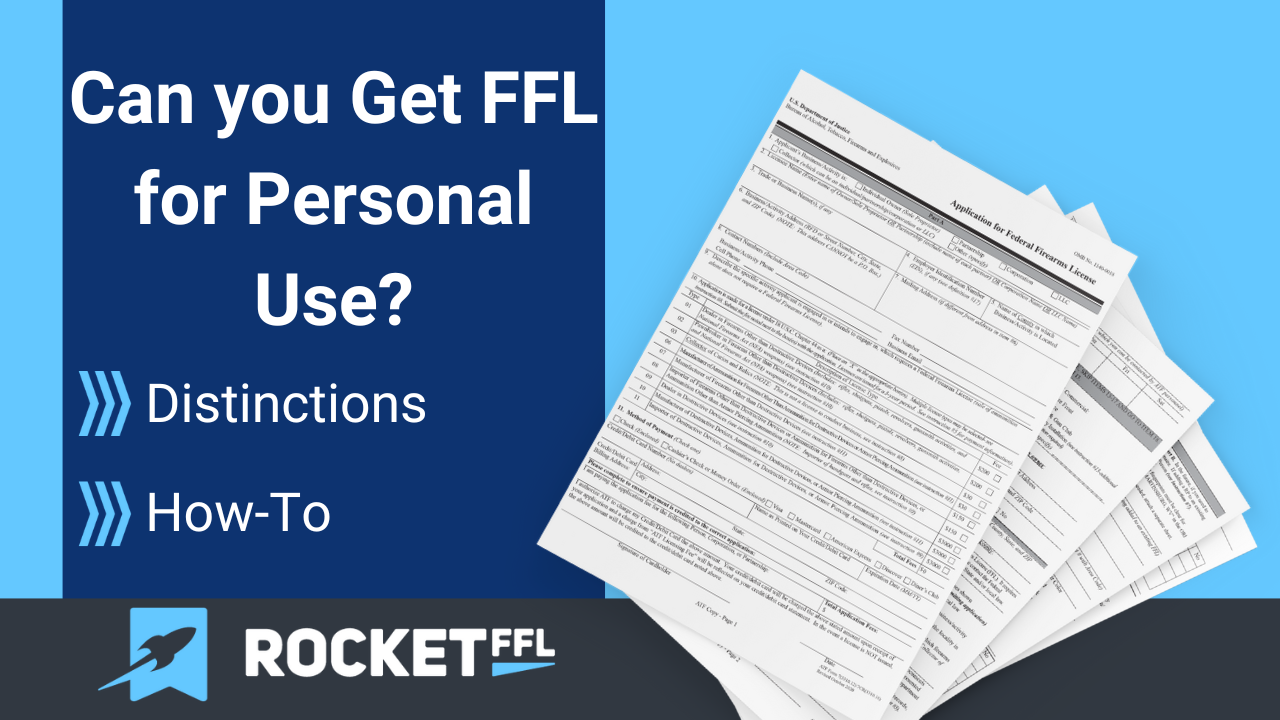
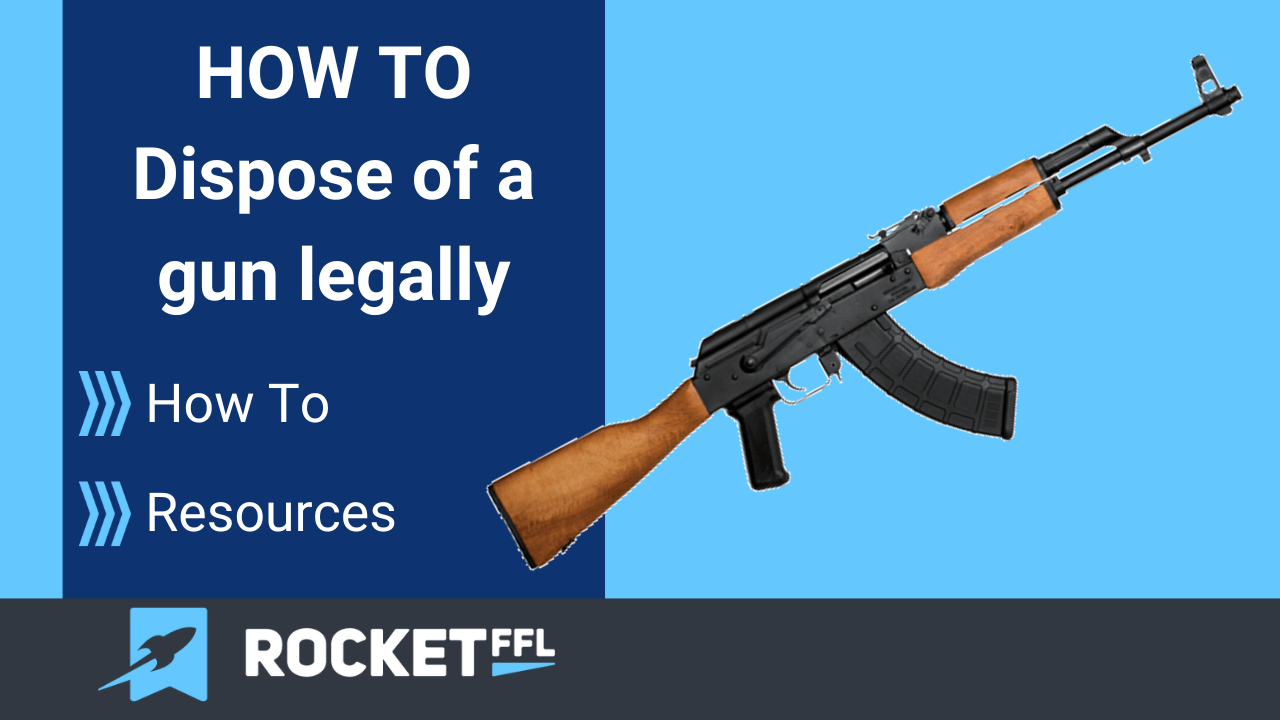
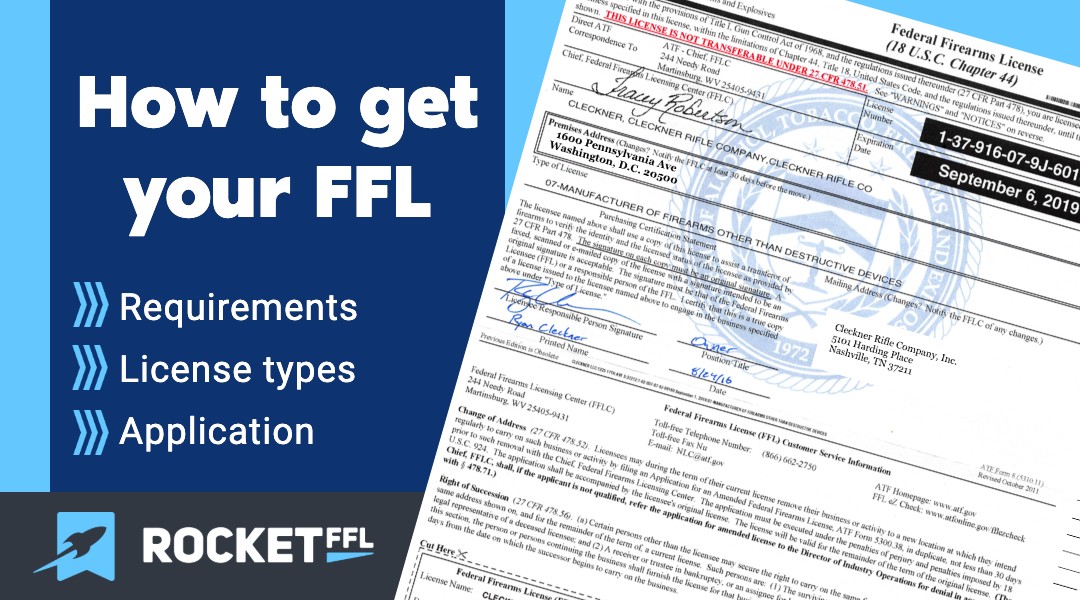
Can u gunsmith under a type 7?
Yes, a Type 07 can do everything a Type 01 can do.